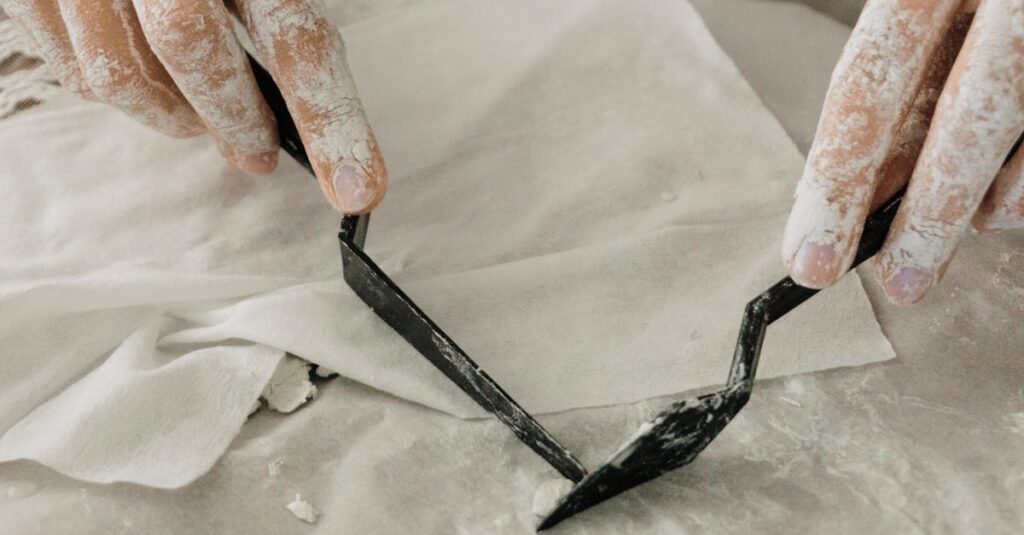When I first delved into the world of art, I kept stumbling upon the term “WIP.” It didn’t take long to realize that “WIP” stands for “Work In Progress.” In the art community, this acronym is more than just a label; it represents the ongoing journey of creation and refinement.
Artists often share their WIPs to offer a glimpse into their creative process. It’s a way to document the evolution of their work and engage with their audience. Whether you’re an aspiring artist or an art enthusiast, understanding what WIP means can deepen your appreciation for the art you love.
Understanding WIP in the Art World
WIP, or “Work In Progress,” represents an essential concept among artists. It offers insights into the developing stages of an artwork.
Definition of WIP
“WIP” stands for “Work In Progress.” In the artistic context, it describes any art piece that isn’t complete but is being developed. Artists use the term WIP to refer to projects at various stages, from initial sketches to partially finished pieces.
The Significance of WIP in Artistic Processes
WIPs play a crucial role in artistic processes. Sharing WIPs allows artists to document their progress, offering viewers a glimpse into their techniques and creative journey. It fosters a sense of community, as artists gain feedback and encouragement from their audience during the creation phase. WIPs enable artists to refine their ideas and make adjustments based on real-time interactions. This practice not only enriches the final artwork but also deepens the connection between the artist and their audience.
How Artists Use WIP
Artists use WIP (Work In Progress) to share their ongoing creative journey. It offers artists unique advantages and presents specific challenges.
Benefits of WIP for Creativity and Flow
Sharing WIP boosts creativity by encouraging experimentation. Artists often try new techniques without fear of failure, knowing that feedback can guide their process. For example, experimenting with color schemes or compositions becomes less daunting.
Releasing WIP maintains artistic flow. When I share my stages, it motivates me to keep working, since the audience’s anticipation and comments keep my engagement high. This continuous feedback loop sustains momentum and enhances productivity.
Challenges and Solutions in Managing WIP
Managing WIP involves several challenges. One challenge is receiving non-constructive criticism. To address this, I filter feedback, focusing on valuable critiques and ignoring harmful comments.
Time management is crucial when dealing with multiple WIPs. Prioritizing tasks based on deadlines and complexity helps. I use digital tools to track progress, ensuring I allocate appropriate time to each piece and prevent overlaps.
Documenting each stage may disrupt the creative process. To mitigate this, I streamline documentation methods. Using quick photos or videos, I capture significant stages without hindering my workflow.
The Impact of WIP on Art Appreciation
WIPs offer unique insights into the artistic process. Viewers gain a deeper appreciation for the effort and creativity involved.
Viewers’ Perspective on Incomplete Works
Seeing incomplete works lets viewers connect with the artist’s journey. They understand the artist’s vision and effort better. This connection fosters empathy and respect. Observing various stages, such as sketches and drafts, provides insights into the creative process. Viewers feel more involved and invested in the final piece, knowing the effort and thought behind it.
Educational Value of WIP Exhibitions
WIP exhibitions educate audiences about art creation. They highlight techniques and materials used, providing practical learning opportunities. Students and aspiring artists benefit from seeing the development stages. They learn about problem-solving and decision-making in real-time. These exhibitions bridge the gap between theory and practice, making art more accessible to a wider audience.
Conclusion
Understanding the concept of WIP in art is essential for anyone looking to deepen their appreciation of the creative process. It allows artists to share their journey and engage with their audience in meaningful ways. By embracing WIP, artists can enhance their creativity and manage challenges more effectively. For viewers, witnessing a WIP offers a unique glimpse into the artist’s mind, fostering empathy and respect. Educational WIP exhibitions further bridge the gap between theory and practice, making art more accessible to everyone. So next time you see a WIP, take a moment to appreciate the story behind the artwork.
Frequently Asked Questions
What does WIP stand for in the art community?
WIP stands for “Work In Progress.” It refers to unfinished artworks that artists share to showcase their creative journey, gather feedback, and engage with their audience.
Why is WIP significant for artists?
WIPs are significant because they allow artists to share their creative process, gain valuable feedback, and foster a sense of community. It also helps in enhancing creativity and managing workflow challenges.
How do WIPs benefit viewers?
WIPs provide viewers with unique insights into the artistic process, fostering empathy and respect for the artist’s vision. They also enhance the understanding and appreciation of art.
How do artists handle criticism on their WIPs?
Artists manage criticism by filtering feedback, focusing on constructive comments, and maintaining their creative vision. This helps them stay motivated and improve their work.
What role do digital tools play in WIP?
Digital tools are essential for tracking progress, organizing feedback, and sharing WIPs with a broader audience. They make it easier for artists to manage their creative process effectively.
How do WIP exhibitions educate the audience?
WIP exhibitions educate the audience by offering practical learning experiences, bridging the gap between theory and practice, especially beneficial for students and aspiring artists.
